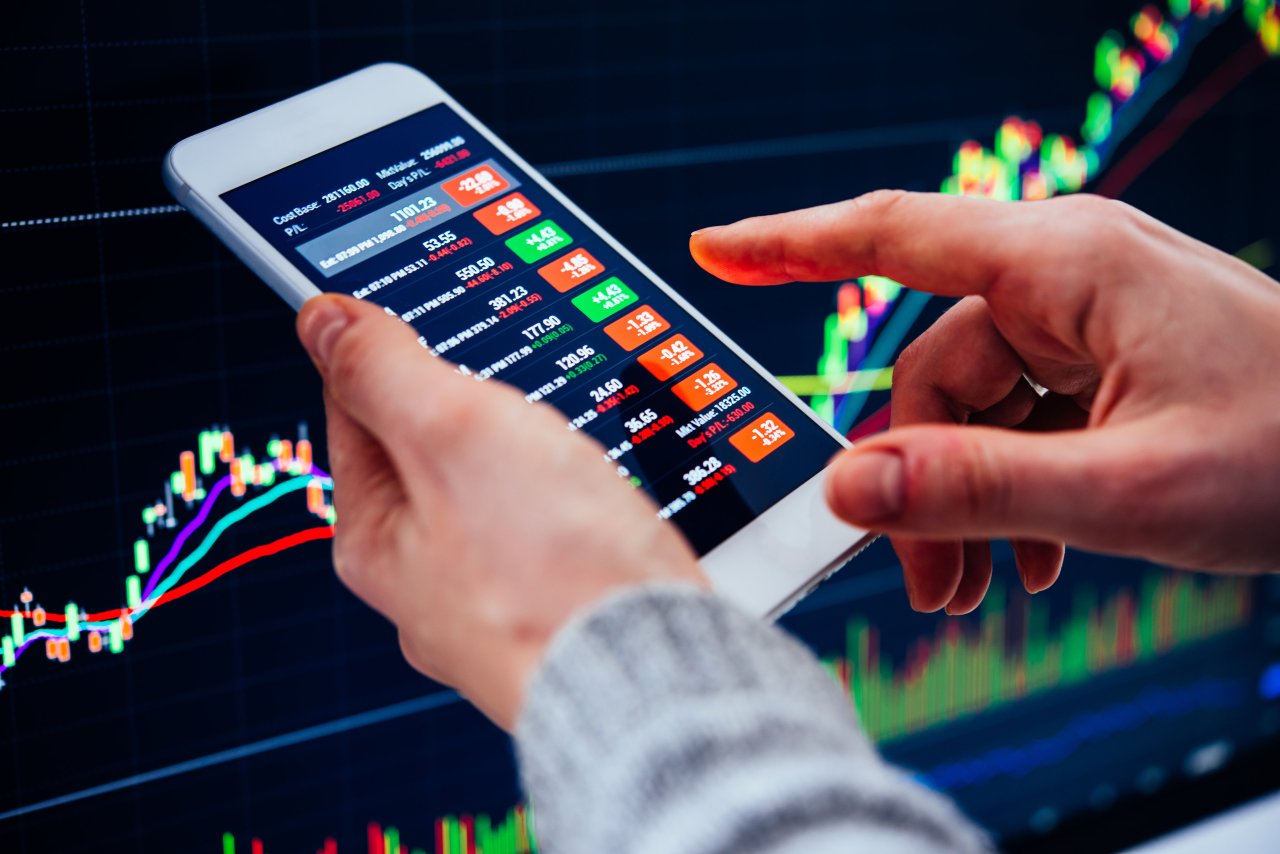 |
A day trader uses a smartphone for a stock investment. (123rf) |
Stock trades carried out through mobile transaction platforms in South Korea hit an all-time high in 2020, data showed Tuesday, reflecting retail investors’ strong appetite for stock investment during the pandemic-hit market.
The daily average amount of stock transactions via mobile trading systems came to 26.66 trillion won ($23.03 billion) last year, up 219.6 percent on-year from 8.34 trillion won, the Bank of Korea said in its annual report on financial information.
An average of 116.3 million trades were made per day through mobile devices in 2020, up 44.8 percent from 80.31 million trades a year prior. Both the number of daily average transactions and their amounts marked fresh highs since the central bank started collecting related data in 2013.
The sharp rise is not only due to the recent stock investment frenzy, but also investors’ preference for smartphones over personal computers.
The portion of stocks traded on the main bourse through MTS took up 40.7 percent of the combined volume, outpacing the amount of daily transactions made via traditional home trading systems, other data compiled by the Korea Exchange showed. Until April of this year, mobile devices stood as the most favored means of trading on Kospi with 47.6 percent.
Backed by the unprecedented pandemic and the contactless boom spreading across the country, usage of major electronic financial services here showed an upward trend as well.
Excluding the state-run Export-Import Bank of Korea, the average number of daily transactions processed via internet banking services and mobile banking services rose by 13.2 percent on-year to 13.78 million in the previous year, while the average amount of money dealt using such means soared 20.7 percent on-year to 58.8 trillion won.
The number of information technology-related workers in 150 domestic financial firms saw an increase of 3.9 percent on-year, contrary to the shrinking workforce at the companies. The result was followed by the local banks’ efforts to accelerate digital transformation.
While the figure stood at 10,265 in total at end-2020, it accounted for 4.5 percent of all financial workers, the data showed.
By Jie Ye-eun (
yeeun@heraldcorp.com)







![[Weekender] Korea's traditional sauce culture gains global recognition](http://res.heraldm.com/phpwas/restmb_idxmake.php?idx=644&simg=/content/image/2024/11/21/20241121050153_0.jpg)
